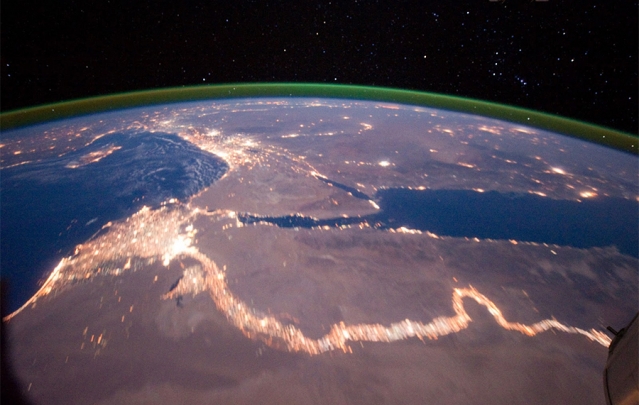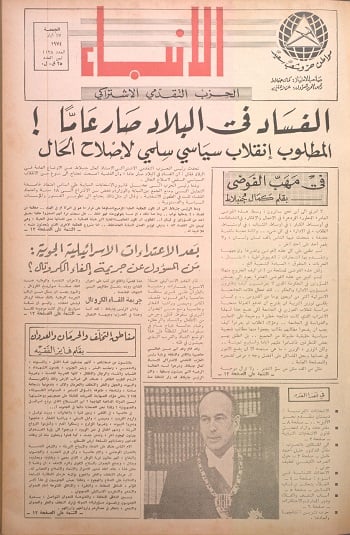How to Think About the New Middle East
Dennis Ross / Washington Institute
1 أغسطس 2014

The Obama administration’s approach to Gaza needs to take account of new realities in the region.
Secretary of State John Kerry’s efforts to produce a cease-fire may not have succeeded in bringing the current conflict in Gaza to an end, but they have generated plenty of commentary. Kerry has been lacerated in the Israeli press, even in ostensibly sympathetic outlets like the left-wing Haaretz, which headlined a scathing article on his diplomatic endeavors “What was he thinking?” For understandable reasons, the secretary sought to bring the killing to an end, reflecting not only a humanitarian impulse but also President Obama’s instructions, which required him “to push for an immediate cessation of hostilities based on a return to the November 2012 cease-fire agreement between Israel and Hamas.”
While perhaps logical, the president’s guidance failed to take account of several new realities. First, the 2012 agreement had done nothing to prevent Hamas from building up an elaborate network of tunnels to launch rockets and infiltrate Israel — and Israel is not about to live with tunnels that penetrate the country and constitute, in the words of one Israeli, “a loaded gun at our heads.” Second, this is a different Egypt today, under President Abdel Fattah al-Sisi, and it views Hamas as a threat rather than a potential ally. It has no interest in saving Hamas or allowing it to gain from the current conflict. Third, the Saudis, Emiratis and Jordanians see the Muslim Brotherhood, the Islamist group from which Hamas sprang, as just as threatening as Iran. Like Egypt, these moderate Arab states want to see Hamas lose and not win.
These new realities also help to explain why Hamas launched this round of fighting: It was isolated and in desperate shape financially. Egypt had cut off the smuggling tunnels from Sinai into Gaza, which accounted for most of Hamas’ revenues. Hamas’ other main source of funding, the Iranians, has dried up given differences over the Syrian conflict and Iran’s other priorities. Hamas expected that its reconciliation agreement with the Palestinian Authority would lead to the PA picking up Hamas’ financial obligations. But the PA would not do so, and Hamas could not pay salaries. With little to lose, Hamas launched this round of fighting, hoping that by being the focal point of resistance, winning sympathy because of large Palestinian civilian casualties, and imposing at least some losses on Israel, it could re-emerge as a player that must be dealt with and satisfied.
That cynical strategy, at a minimum, requires that Hamas gain something out of the conflict, and its only advocates are Turkey and Qatar. But this is a different Middle East than it was in 2012, when Egypt was ruled by the Muslim Brotherhood and Islamists seemed to be marching across the region. Today, Israel, Egypt, Saudi Arabia, the Emirates and Jordan share the common goal of weakening Hamas. The Palestinian Authority shares this objective, but as Palestinian casualties increase in Gaza, its leader, Mahmoud Abbas, finds himself in an impossible position: He, too, is desperate to have the fighting stop but can ill afford for Hamas to emerge as the symbolic victor.
No doubt, the Obama administration recognized what was happening to Abbas and saw the rising tensions on the West Bank and the terrible civilian toll in Gaza, and hoped it could bring the conflict to an end. Once Hamas rejected Egypt’s first cease-fire proposal, and Egypt was largely passive, the Obama team seems to have believed that Turkey and Qatar might be able to use their respective influence with Hamas to produce a cease-fire.
But here again, we see the new realities confounding such an approach. Turkey and Qatar share Hamas’ goal of having it gain — meaning that the fighting ends, the siege of Gaza is lifted and no safeguards are adopted on materials going into the Strip that would inhibit Hamas’ ability to reconstitute its military infrastructure of rockets and tunnels. It is not just Israel that cannot accept that outcome. Neither can the Egyptians, Saudis or their regional allies. And, truth be told, it is still Egypt that matters. Egypt controls the crossing point at Rafah, the southern entrance to Gaza, and it is closed. Today, ironically, the only crossing points into Gaza that function at all are the Israeli ones. So when this conflict ends, Egypt can have a huge impact on what and who can move in and out of Gaza.
That gives Egypt leverage. Its relationship with Israel matters, and Israeli confidence that Egypt shares its interest in not allowing Hamas to reconstitute its military capabilities means that Egypt can influence Israel’s position. Ultimately, Egypt can also influence Hamas because, at a minimum, Hamas needs Rafah to be open at the end of the conflict — even if Egypt, as is likely, will insist that the Palestinian Authority is positioned in the Rafah crossing point. To be sure, it is possible that to end the conflict, Egypt may also acquiesce in allowing Qatar to pay the Hamas salaries and to allow that money to pass through Rafah. But Egypt’s approach toward Hamas, which it sees as contributing to the threats it faces in Sinai, is to keep it contained and the Egyptians will have that as a goal in any cease-fire they broker.
The point is that the conflict is going to end. It can end through a negotiated outcome in which we focus on Egypt and not Turkey or Qatar. Or it will end when Israel has destroyed the tunnels and Hamas sees that its arsenal of rockets is running too low and that the price within Gaza has become too high. Kerry, to his credit, envisioned the cease-fire he was trying to arrange as one in which fighting would stop but Israel could finish destroying the tunnels. It has not worked yet, but if the United States works exclusively through the Egyptians, it may yet happen.
There is a larger point for the Obama administration to consider, too. It needs to read the new strategic landscape in the region and act accordingly. That landscape should shape our calculus as we approach the larger questions of Israeli-Palestinian peace, Syria, Iraq and Iran. In its remaining two and half years, the administration needs to approach the Middle East with a broader goal and judge how its day-to-day policies support or detract from that goal: How can it ensure that U.S. friends in the region are stronger in January 2017, and their adversaries (and ours) are weaker? Ultimately, President Obama and Secretary Kerry would be wise to approach the current conflict, and its end, with that objective in mind.
 عن أمل جنبلاط المتجدد: لبنان يستحق النضال
عن أمل جنبلاط المتجدد: لبنان يستحق النضال
 صحافيون أم عرّافون!
صحافيون أم عرّافون!
 ماذا يجري داخل أروقة بيت الكتائب المركزي؟
ماذا يجري داخل أروقة بيت الكتائب المركزي؟


 عن الخرائط التي تُرسم والإتفاقات التي تتساقط!
عن الخرائط التي تُرسم والإتفاقات التي تتساقط!
 “الإنحراف في الحياة”/ بقلم كمال جنبلاط
“الإنحراف في الحياة”/ بقلم كمال جنبلاط
 هاشتاغ #صار_الوقت يحل أولاً في حلقة جنبلاط
هاشتاغ #صار_الوقت يحل أولاً في حلقة جنبلاط
 طاولة نقاش عن أزمة الصحافة في جامعة AUST
طاولة نقاش عن أزمة الصحافة في جامعة AUST
 عبدالله: ليظهر لنا وزير مكافحة الفساد حرصه في صفقات البواخر والفيول
عبدالله: ليظهر لنا وزير مكافحة الفساد حرصه في صفقات البواخر والفيول
 عبدالله: غريب أمر وزارة مكافحة الفساد!
عبدالله: غريب أمر وزارة مكافحة الفساد!

 Comment to Uri Avnery: How Sad What Is Looming Ahead
Comment to Uri Avnery: How Sad What Is Looming Ahead
 “Not Enough!”
“Not Enough!”
 … لمن لم يقرأ يوسف البعيني/ بقلم وسام شيّا
… لمن لم يقرأ يوسف البعيني/ بقلم وسام شيّا
 كمال جنبلاط في مولده الأول بعد المائة: تعاليمه وأفكاره ما زالت الحلّ/بقلم عزيز المتني
كمال جنبلاط في مولده الأول بعد المائة: تعاليمه وأفكاره ما زالت الحلّ/بقلم عزيز المتني
 رئيس حزب/ وليس (… سابقاً)/ بقلم د. خليل احمد خليل
رئيس حزب/ وليس (… سابقاً)/ بقلم د. خليل احمد خليل
 التوازن السياسي في لبنان
التوازن السياسي في لبنان
 لبنان… مشاريع انقلابية مؤجلة
لبنان… مشاريع انقلابية مؤجلة
 جنبلاط وحَمَلة أختام الكاوتشوك
جنبلاط وحَمَلة أختام الكاوتشوك
 Le Liban est un symbole de tolérance
Le Liban est un symbole de tolérance
 Our Automated Future
Our Automated Future
 The True Origins of ISIS
The True Origins of ISIS
 Les Misérables vs. Macron
Les Misérables vs. Macron
 عذراً أيها المعلم/ بقلم مهج شعبان
عذراً أيها المعلم/ بقلم مهج شعبان
 رساله الى المعلم / بقلم ابو عاصم
رساله الى المعلم / بقلم ابو عاصم
 إلى روح القائد والمعلم كمال جنبلاط/ بقلم أنور الدبيسي
إلى روح القائد والمعلم كمال جنبلاط/ بقلم أنور الدبيسي
 أسرار وعناوين الصحف ليوم الجمعة 14 كانون الاول 2018
أسرار وعناوين الصحف ليوم الجمعة 14 كانون الاول 2018














